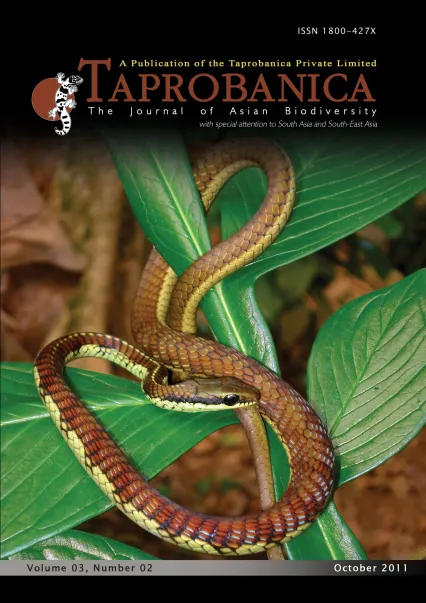

v3i2.48
Volume 3 | Number 2 | November 2011
Major Article
ISSN: 1800-427X (print)
eISSN: 1800-427X (online)
DOI:10.47605/tapro.v3i2.48
Submitted date: 01 April 2011
Accepted date: 22 August 2011
Published date: 20 December 2011
Pp. 52–68.
STATUS OF THE MAMMAL FAUNA IN SUNDARBAN TIGER RESERVE, WEST BENGAL - INDIA
Jayanta Kumar Mallick*
*E-mail: jayantamallick2007@rediffmail.com
Abstract
Sundarban Tiger Reserve (2,584.89 km2) in West Bengal is a part of the world’s largest estuarine wetland and the only mangrove tigerland, spread over India and Bangladesh. Its plant associations exhibit a great generic/species diversity and offers habitats of many rare and endangered mammals. The dense thickets of Heritiera fomes, Nypa fruticans and Phoenix paludosa form the prime habitat of Panthera tigris tigris. This tigerland is also the abode of a good number of its prey and other associated mammal species. A one-year (January-December 2010) study was conducted with the frontline forest department staff to investigate the distribution and status of the mammalian species found in this thirty-eight years’ old tiger conservation area, involving literature review, questionnaire and ground surveys. This has revealed shrinkage of the mangrove swamp habitat and a number of mammal species in decline due to extensive anthropogenic and natural threats. Out of forty nine extant species recorded (eight orders: twenty three families), four are globally endangered, four vulnerable and two near threatened as per IUCN Red List. Alarmingly, fifteen mammal species were found on only rare occasions. In addition, six species (two orders: three families) had become extinct during the last two centuries. Though distributed over all forest block areas, the frequency of tigersighting was recorded more from Sajnekhali Wildlife Sanctuary and the buffer areas than Sundarban National Park or the core area. High-priority wildlife conservation, proper implementation of the tiger action plan, further infrastructural development and effective joint forest management are essential for saving this tigerland.
Key words : Tigerland, world heritage, wetland, distribution, threats, conservation
Section Editor: Lee Harding
eISSN: 1800-427X (online)
DOI:10.47605/tapro.v3i2.48
Submitted date: 01 April 2011
Accepted date: 22 August 2011
Published date: 20 December 2011
Pp. 52–68.
STATUS OF THE MAMMAL FAUNA IN SUNDARBAN TIGER RESERVE, WEST BENGAL - INDIA
Jayanta Kumar Mallick*
*E-mail: jayantamallick2007@rediffmail.com
Abstract
Sundarban Tiger Reserve (2,584.89 km2) in West Bengal is a part of the world’s largest estuarine wetland and the only mangrove tigerland, spread over India and Bangladesh. Its plant associations exhibit a great generic/species diversity and offers habitats of many rare and endangered mammals. The dense thickets of Heritiera fomes, Nypa fruticans and Phoenix paludosa form the prime habitat of Panthera tigris tigris. This tigerland is also the abode of a good number of its prey and other associated mammal species. A one-year (January-December 2010) study was conducted with the frontline forest department staff to investigate the distribution and status of the mammalian species found in this thirty-eight years’ old tiger conservation area, involving literature review, questionnaire and ground surveys. This has revealed shrinkage of the mangrove swamp habitat and a number of mammal species in decline due to extensive anthropogenic and natural threats. Out of forty nine extant species recorded (eight orders: twenty three families), four are globally endangered, four vulnerable and two near threatened as per IUCN Red List. Alarmingly, fifteen mammal species were found on only rare occasions. In addition, six species (two orders: three families) had become extinct during the last two centuries. Though distributed over all forest block areas, the frequency of tigersighting was recorded more from Sajnekhali Wildlife Sanctuary and the buffer areas than Sundarban National Park or the core area. High-priority wildlife conservation, proper implementation of the tiger action plan, further infrastructural development and effective joint forest management are essential for saving this tigerland.
Key words : Tigerland, world heritage, wetland, distribution, threats, conservation
Section Editor: Lee Harding
- List of Articles & Contents





